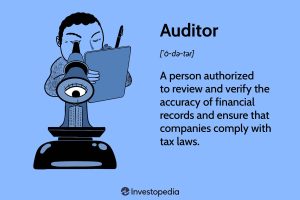The 5 Essential Parts of an Audit: A Comprehensive Guide
Introduction to Audits
Audits play a crucial role in ensuring the integrity and accuracy of financial information for businesses and organizations. They provide stakeholders, including investors, creditors, and regulators, with confidence in the reliability of financial statements. Understanding the different parts of an audit is essential for businesses to comply with regulations and maintain transparency. In this article, we’ll delve into the five key components that make up an audit process. What are the 5 parts of an audit?
1. Audit Planning
Audit planning marks the beginning of the audit process and sets the foundation for the entire engagement. During this phase, auditors gain an understanding of the client’s business, industry, and regulatory environment. They assess the risks associated with the client’s operations and financial reporting, which helps determine the audit approach and procedures to be performed.
Key Activities in Audit Planning:
Understanding the client’s business objectives and operations.
Assessing the internal control environment.
Identifying significant audit areas and potential risks.
Developing an audit strategy and plan.
Effective planning ensures that auditors allocate appropriate resources, manage time efficiently, and address potential challenges proactively.
2. Risk Assessment
Risk assessment is a critical aspect of the audit process, aimed at identifying and evaluating risks that may affect the accuracy of financial statements. Auditors assess both inherent and control risks associated with various accounts and processes. Inherent risks relate to the nature of the business and industry, while control risks pertain to the effectiveness of internal controls in mitigating risks.

Components of Risk Assessment:
Identifying significant accounts and transactions.
Assessing the likelihood and potential impact of risks.
Evaluating the design and implementation of internal controls.
Determining the extent of substantive testing required.
A thorough risk assessment enables auditors to focus their efforts on areas with higher inherent and control risks, ensuring that audit procedures are tailored to address potential misstatements effectively.
3. Execution of Audit Procedures
The execution phase involves performing audit procedures to gather evidence and assess the accuracy of financial statements. Audit procedures may include tests of controls, substantive tests, analytical procedures, and other auditing techniques. Auditors obtain supporting documentation, perform inquiries, and conduct observations to corroborate the information presented in financial statements.
Types of Audit Procedures:
Tests of controls: Assessing the effectiveness of internal controls.
Substantive tests: Directly examining account balances and transactions.
Analytical procedures: Evaluating relationships and trends in financial data.
Inquiry and observation: Obtaining information from management and observing processes.
By diligently executing audit procedures, auditors obtain sufficient and appropriate evidence to form an opinion on the fairness of financial statements.
4. Audit Reporting
Audit reporting is the culmination of the audit process, where auditors communicate their findings and conclusions to stakeholders. The audit report typically includes the auditor’s opinion on whether the financial statements present a true and fair view in accordance with applicable accounting standards and regulatory requirements.
Components of Audit Reporting:
Auditor’s opinion: Expressing a conclusion on the fairness of financial statements.
Basis for opinion: Describing the audit procedures performed and key findings.
Emphasis of matter: Highlighting significant matters that warrant attention.
Other reporting requirements: Disclosing additional information as required by regulations.
Clear and concise audit reporting enhances transparency and accountability, providing stakeholders with valuable insights into the financial health and performance of the audited entity.
5. Audit Follow-Up
The audit follow-up phase involves addressing any findings or recommendations identified during the audit process. Auditors communicate their findings to management and work collaboratively to develop corrective actions and remediation plans. Follow-up procedures ensure that identified issues are promptly resolved, contributing to ongoing improvement in financial reporting processes and internal controls.
Steps in Audit Follow-Up:
Communicating findings to management and stakeholders.
Collaborating on corrective actions and remediation plans.
Monitoring implementation of corrective measures.
Providing feedback and recommendations for continuous improvement.
By actively engaging in audit follow-up activities, organizations demonstrate their commitment to addressing weaknesses and enhancing the reliability of financial reporting.
Conclusion
In conclusion, audits consist of five essential parts: audit planning, risk assessment, execution of audit procedures, audit reporting, and audit follow-up. Each part plays a vital role in ensuring the integrity and reliability of financial information. By understanding these components, businesses can effectively navigate the audit process, comply with regulatory requirements, and maintain transparency for stakeholders. Embracing best practices in auditing contributes to sound corporate governance and fosters trust and confidence in financial reporting. For more read here.



